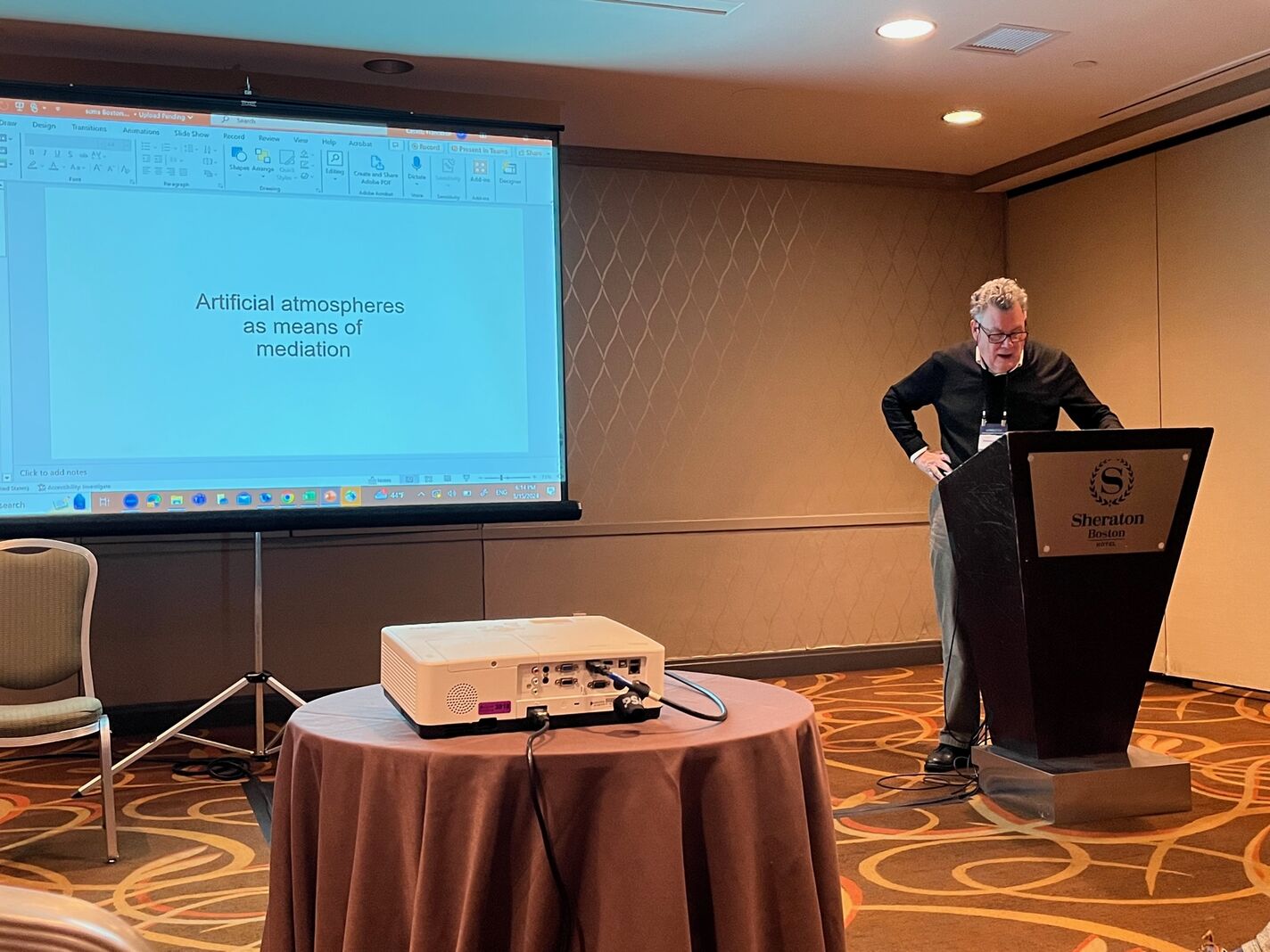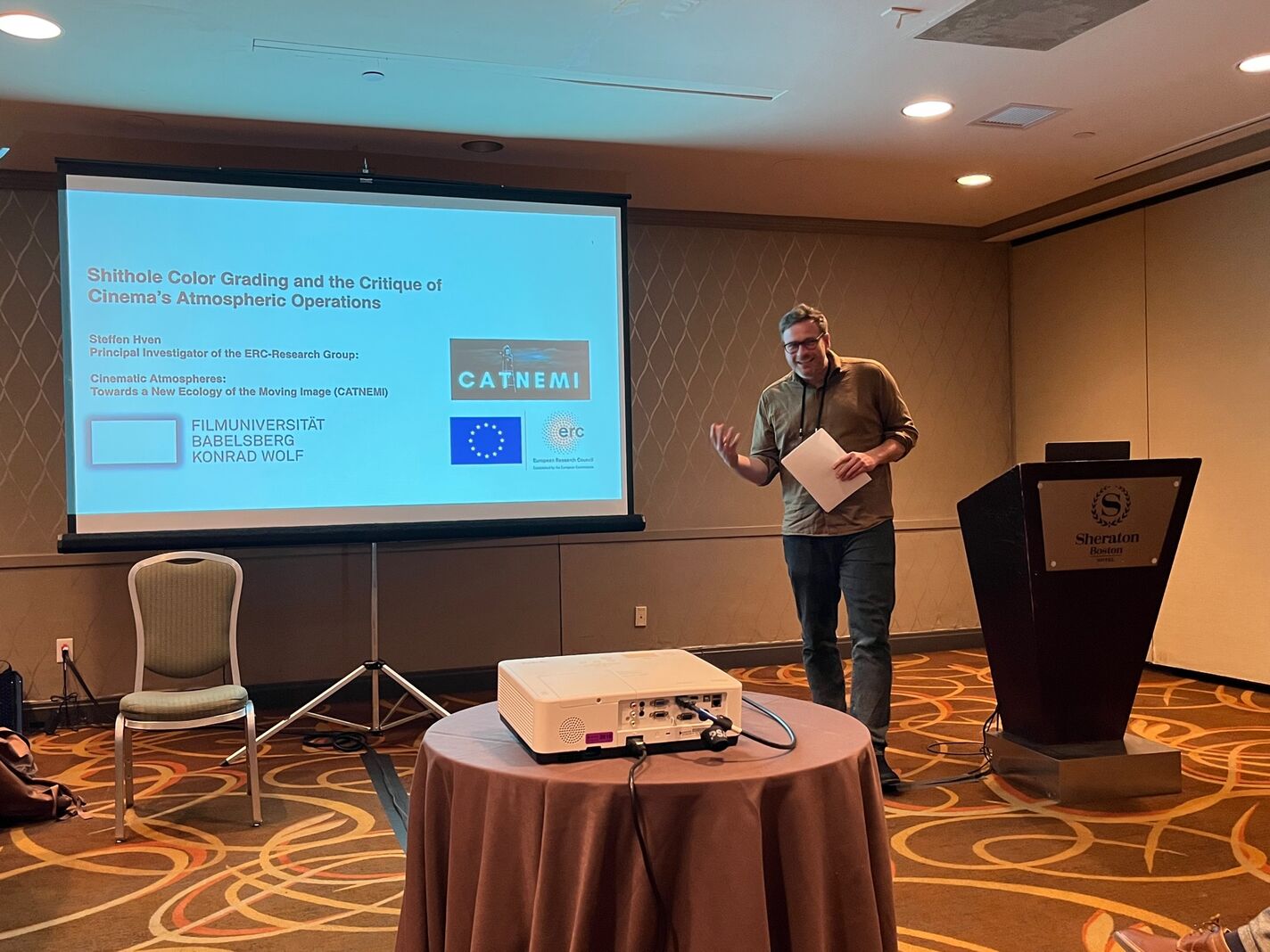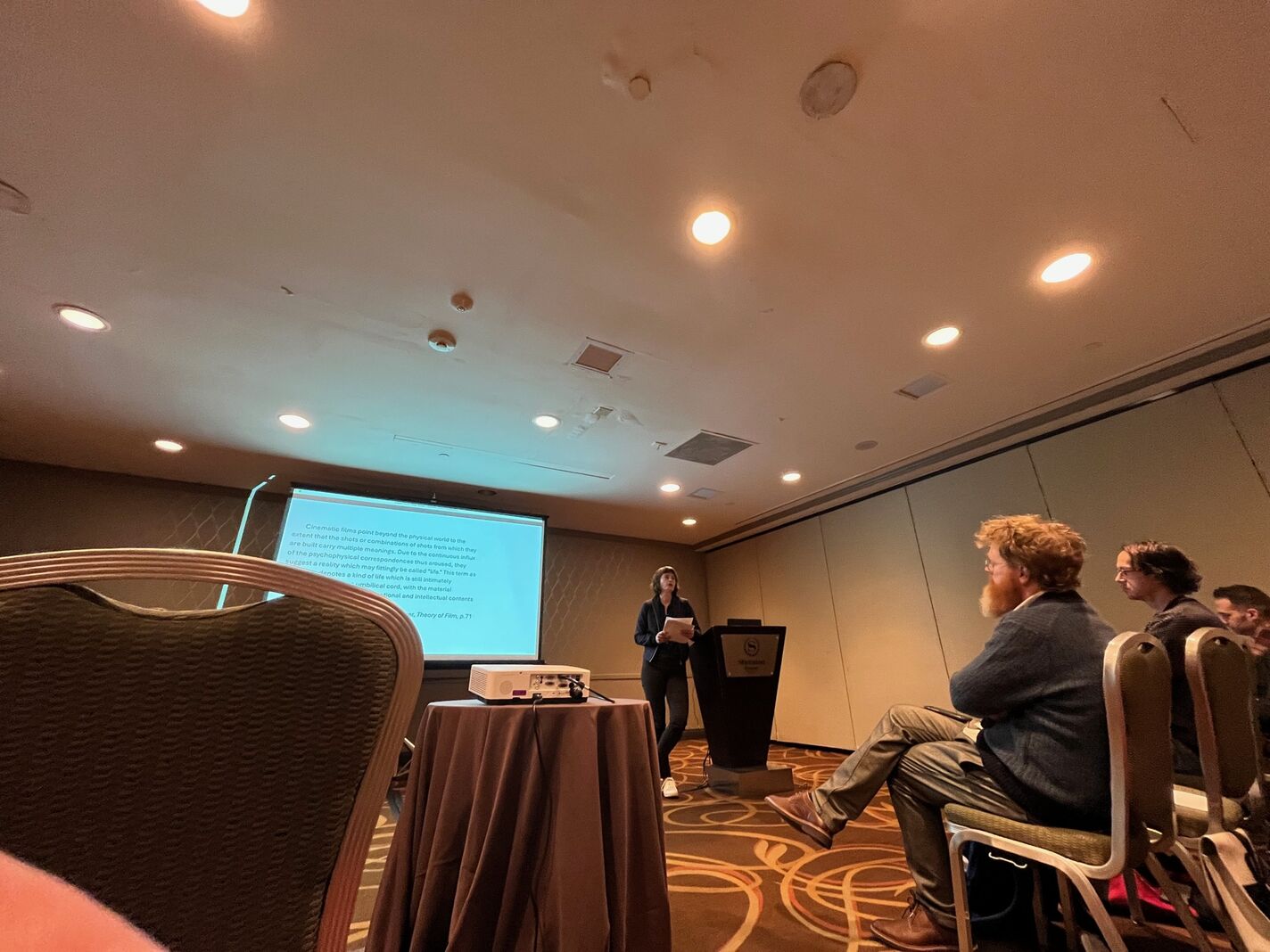The project's Principal Investigator, Dr. Steffen Hven, presented his topic of „Sh*thole Color Grading and the Critique of Cinema’s Atmospheric Operations“, in which he lays focus on Hollywood stereotypes in atmospheric operations, like the yellow-orange sepia color-grading that accentuate the heat of the climate in both meteorological and socio-political terms or the dull and grainy grayscale filters over an image-track of brutalist architecture as a way of portraying life in the countries of the former ‘Eastern Bloc’ as culturally, materially, and emotionally deprived.
Noticeable about this criticism is that it is not targeted at the level of the narrative representation—at who gets to be represented and who remains invisible in contemporary media culture (as the Bechdel test is exemplary of)—but instead draws attention to cinema’s ‘atmospheric operations’, i.e, to techniques and expressive stylistics aimed at regulating and orchestrating the mood, Stimmung, or feeling tone of what is portrayed.
Dr. Hven’s presentation was framed by other colleagues on the field of atmospheric research. Inga Pollmann asked the question how the environmental aspects of atmospheres relate to the concepts of mood, milieu and medium - as in how film as a medium constitutes (rather than mediates) a certain milieu in making it accessible via certain moods.
Finally Francesco Casetti gave insights in the field of protective media and how atmospheric media can protect subjects of overwhelming experiences via the constant re-arrangement of a set of operations, which include representations of natural phenomena, the underlining of the risks that a direct exposure to reality entails, and the creation of positive conditions from which to negotiate the surrounding reality.
More information about the CATNEMI project (funded by the ERC) can be found on the project website.



